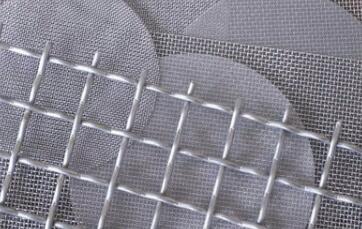Understanding the Price of Bird Cage Wire Mesh
Birds are wonderful companions, offering a range of benefits from companionship to the joy of watching their playful antics. As pet owners invest in their feathered friends, one crucial element to consider is the safety and comfort of the environment we create for them. One essential component in housing birds is the wire mesh used in bird cages. This article explores the factors influencing the price of bird cage wire mesh, ensuring that pet owners can make informed decisions when purchasing materials for their avian pals.
Types of Bird Cage Wire Mesh
Before discussing price, it's important to understand that not all wire mesh is created equal. Several types are available, and each comes with different specifications, impacting the price
1. Stainless Steel Wire Mesh Known for its durability and resistance to corrosion, stainless steel wire mesh is considered the gold standard among bird owners. While it is more expensive than other types, its longevity and safety features may justify the cost, particularly for larger or more destructive birds.
2. Galvanized Steel Wire Mesh This option is often less expensive than stainless steel, thanks to a protective zinc coating that helps prevent rusting. It provides a reasonable balance between cost and durability, making it popular among bird owners who want to afford a safe habitat without breaking the bank.
3. Plastic Coated Wire Mesh Often used for budget-friendly aviaries, plastic-coated wire mesh provides some level of rust resistance while being lighter and easier to handle. However, it may not withstand the wear and tear that more active birds can cause, leading to a potential need for replacement sooner than expected.
4. PVC Coated Wire Mesh Similar to plastic-coated options, PVC coated wire offers added protection against rust and wear. This type may be a suitable choice for owners looking for a compromise between affordability and durability.
Factors Affecting Price
bird cage wire mesh price

When assessing the price of bird cage wire mesh, several factors come into play
1. Material Quality High-quality materials tend to have a higher price point. Stainless steel, for instance, is significantly costlier than galvanized steel but offers superior durability and safety.
2. Mesh Size and Gauge The mesh size refers to the size of the openings in the wire mesh, while the gauge indicates the thickness of the wire. Tighter mesh sizes and thicker gauges generally increase production costs, resulting in a higher purchase price.
3. Roll Size Wire mesh often comes in various roll sizes. Larger rolls may provide a lower cost per square foot but will require a larger upfront investment. Conversely, smaller rolls are convenient but might be pricier per square foot.
4. Brand Reputation and Source Prices can also vary depending on the manufacturer and where you purchase the wire mesh. Well-known brands may charge a premium for their products due to established trust and reputation for quality.
5. Location and Availability Local demand, shipping costs, and availability can affect the price of wire mesh. Regions with a higher concentration of bird keeping enthusiasts may see lower prices due to local suppliers competing for business.
6. Custom Features Some wire meshes may come with customizations, such as specific coatings, added insulation, or further treatments for rust resistance, which can increase the price.
Conclusion
When investing in bird cage wire mesh, it's essential to consider both the quality and price to ensure that your avian pet has a safe and comfortable environment. While it might be tempting to opt for the cheapest option available, understanding the long-term implications of your choice can lead to better outcomes for your bird's health and happiness. Ultimately, the right wire mesh can make a significant difference in maintaining a healthy and secure habitat for your cherished feathered companion. Always weigh your options carefully and choose materials that provide the best balance of safety, durability, and affordability.

















